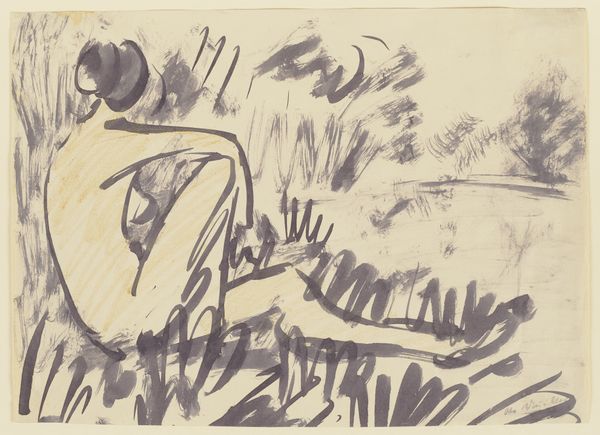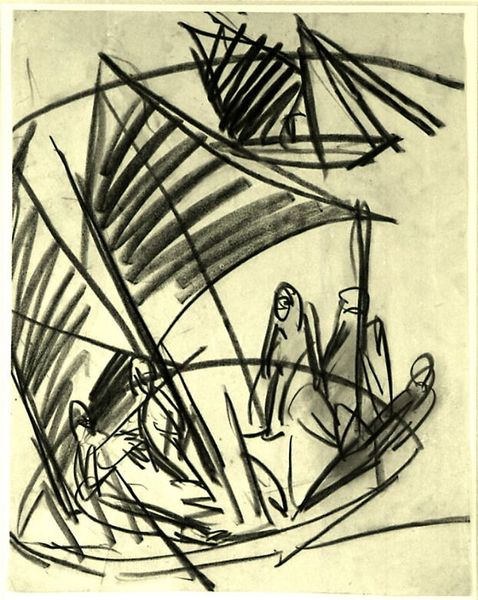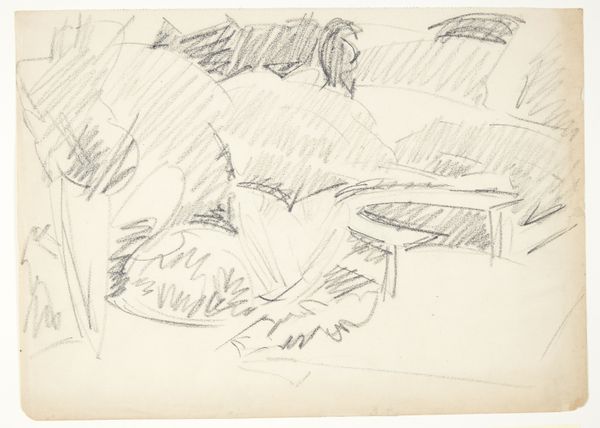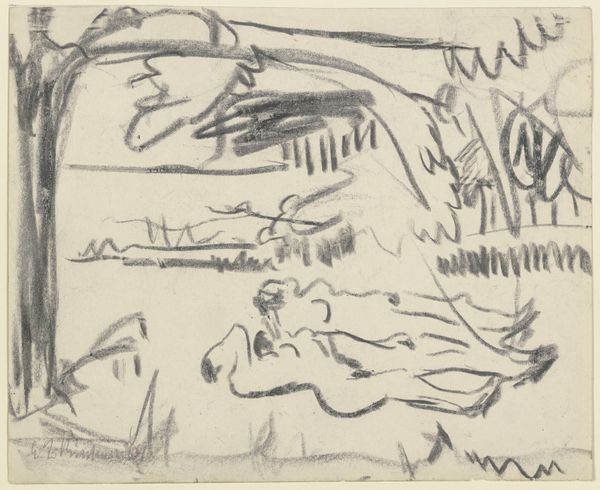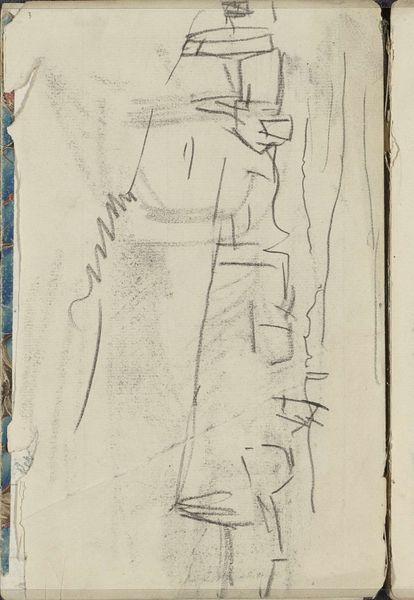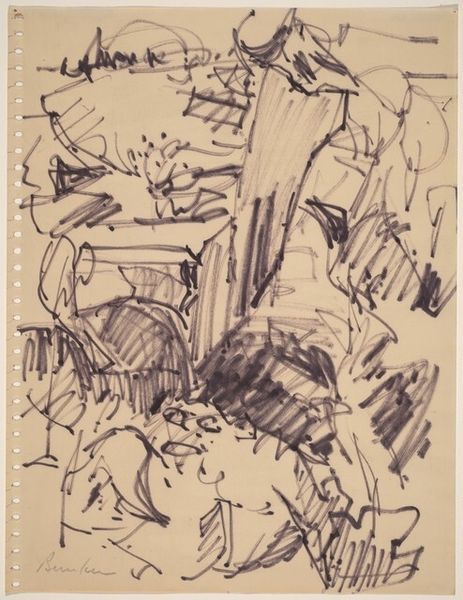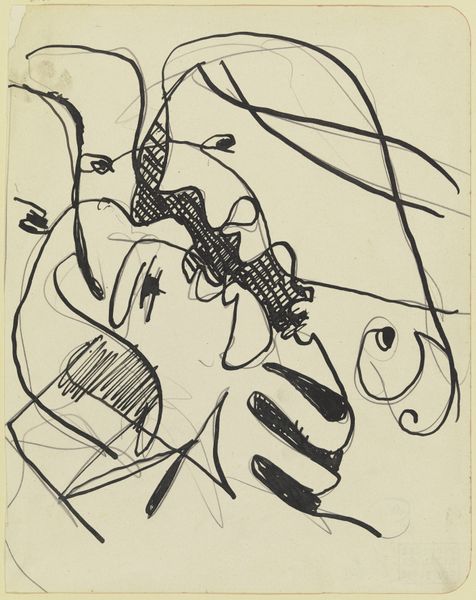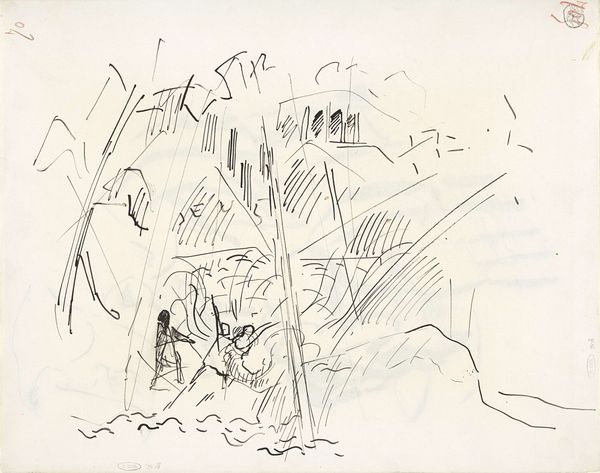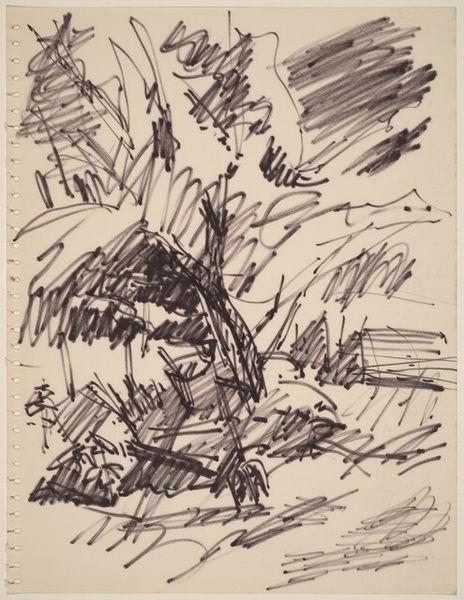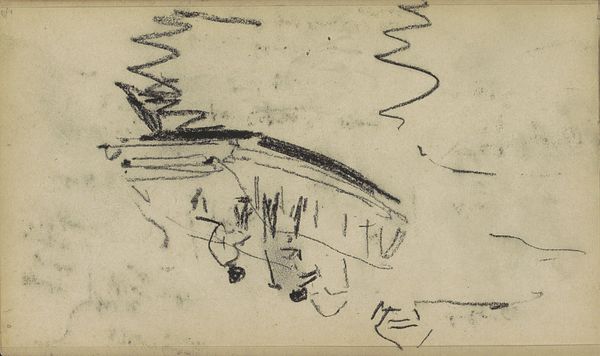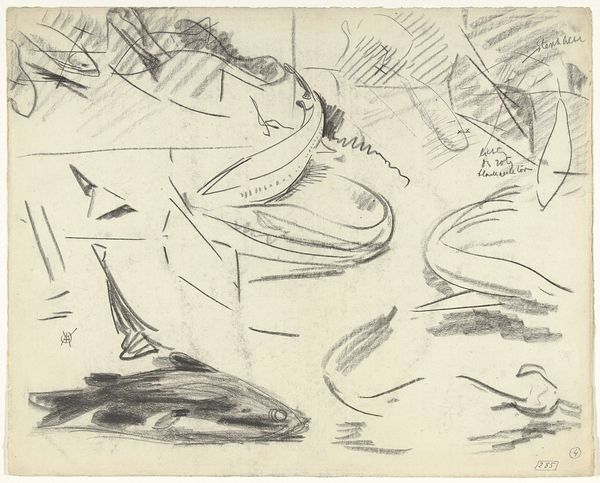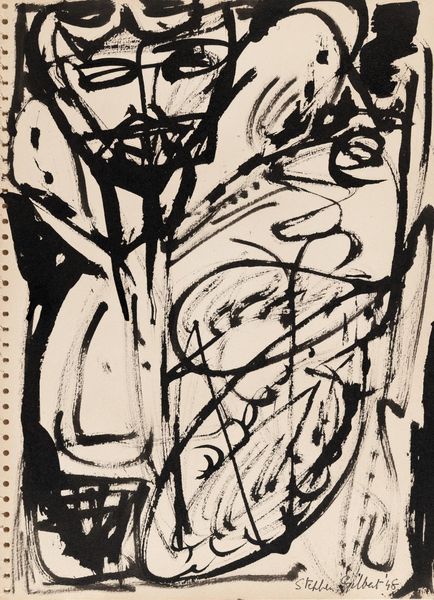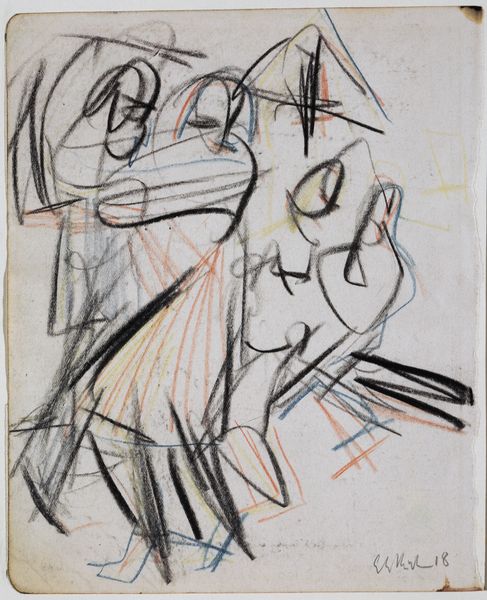
drawing, charcoal, frottage
#
drawing
#
landscape
#
figuration
#
personal sketchbook
#
expressionism
#
abstraction
#
line
#
charcoal
#
frottage
Copyright: Public Domain
Editor: Here we have Ernst Ludwig Kirchner’s "Fehmarnküste", created around 1913. It’s a charcoal and frottage drawing. It feels unfinished, a raw snapshot of a coastal scene. What strikes you most about its composition? Curator: Immediately, the dynamism of the linework compels attention. Notice the dense, almost frantic hatching creating tonal variation, contrasting with stark, singular lines. It yields a fractured, almost cubist representation, though nominally a landscape. Do you perceive how the human figure is integrated almost as another element of the scenery, rather than as a focal point? Editor: I do now! The figure seems quite small and almost blends in with its surroundings. I’m also wondering about the composition – it’s all these very energetic lines that create different structures within the artwork – almost like a visual syntax? Curator: Precisely. Observe how the foreground and background planes almost collapse into one another, disrupting traditional perspective. The energy is located within the mark making, with layers of graphite and areas of frottage build an entire, vibrant space for contemplation and thought. What sort of ideas do these signs conjure in your mind? Editor: I see the way he uses abstraction to convey such a landscape through this distinct lens of mark making, it gives so much insight into Expressionist intent through his choice of line! Curator: Exactly! By emphasizing formal elements over representational accuracy, Kirchner creates a deeply personal and evocative depiction of place. This piece serves as a testament to Expressionism's pursuit of subjective experience through bold visual language. Editor: I never would have looked at the figure that way! Looking at the linework gave me a far greater respect for how the personal touch of mark making renders and shapes an idea through drawing. Curator: It highlights the inherent value of artistic choices in imbuing an artwork with meaning beyond its surface subject. This sort of intensive visual examination and thinking about materials only allows for even deeper thought and understanding.
Comments
No comments
Be the first to comment and join the conversation on the ultimate creative platform.
